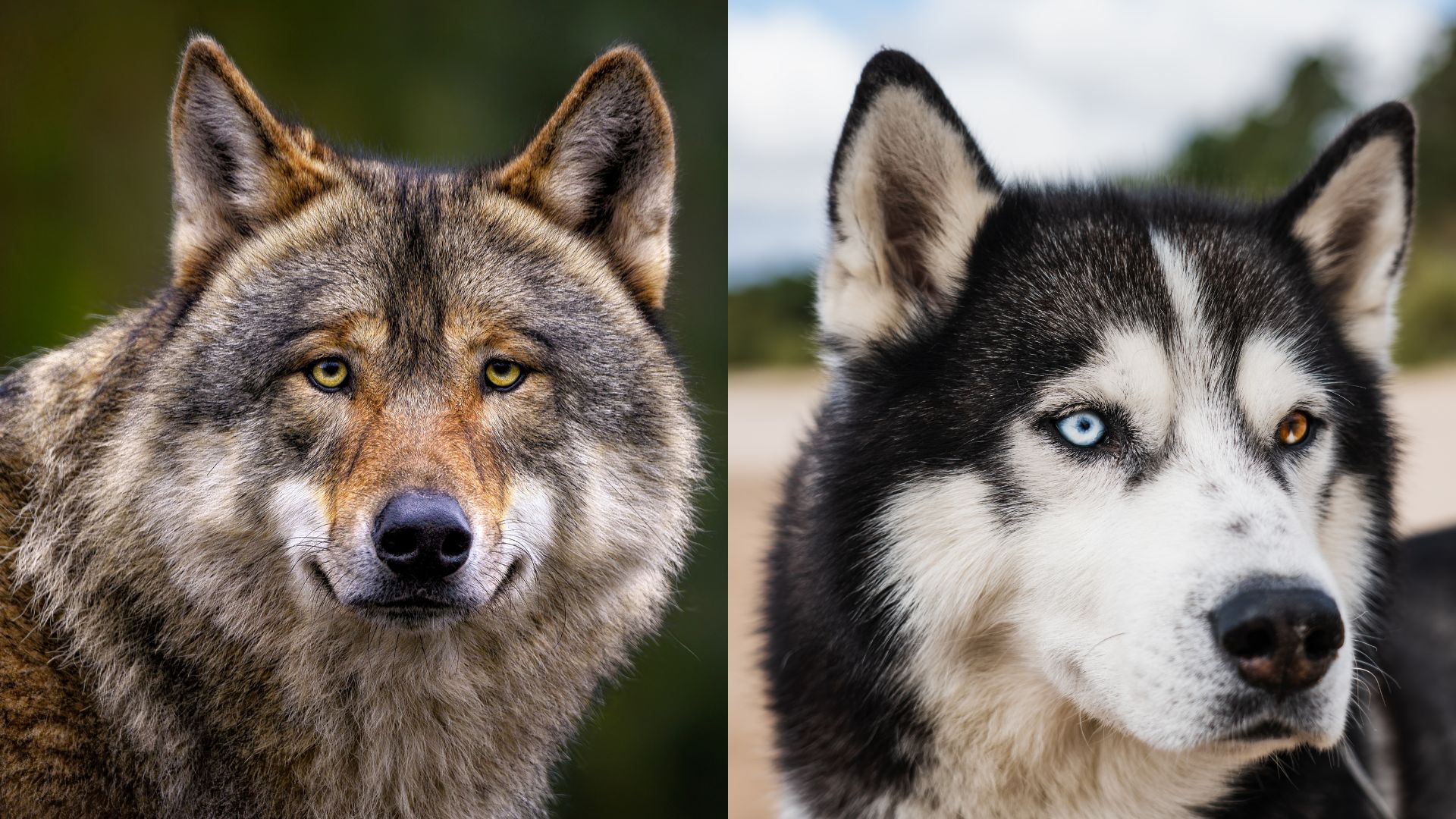Wolves and huskies might seem like close cousins because of their similar looks, but there are fascinating differences that set them apart.
Let’s uncover some obvious and some unexpected ways to distinguish between these two magnificent animals.
Whether you’re a curious animal lover or a pet enthusiast, these insights will surely intrigue you. Get ready to embark on a journey through the wonderful world of wolves and huskies!
1. Ears: Shape and Position
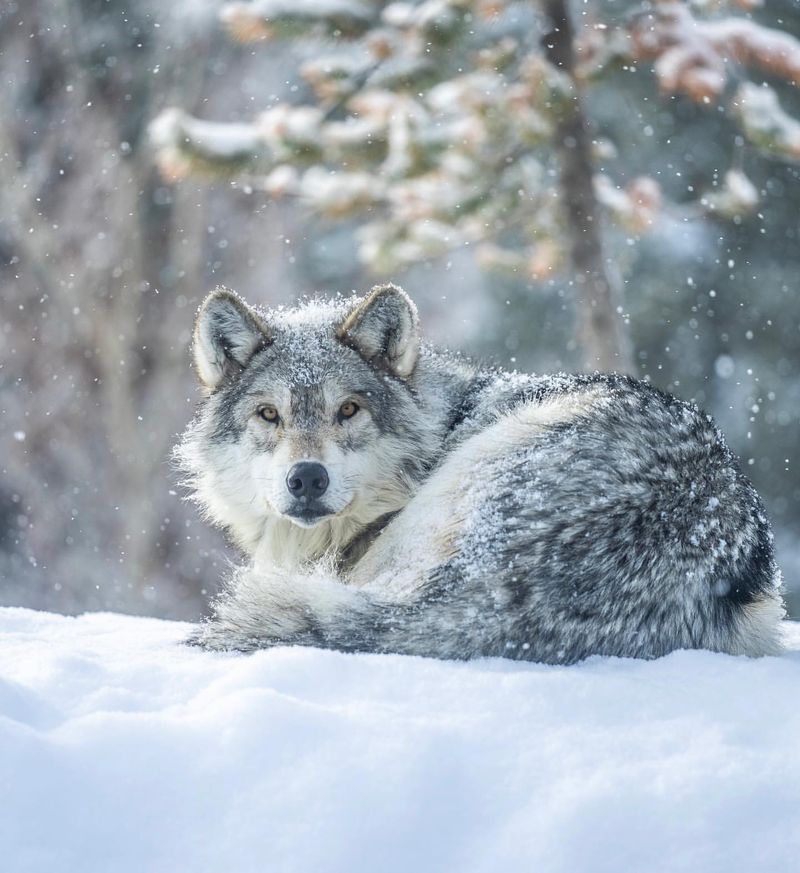
When it comes to ears, wolves and huskies have distinct differences. Wolves have ears that are proportionally smaller and more triangular in shape, positioning them further apart on their head.
This adaptation helps them in the wild, allowing for better sound localization and enhanced hunting skills. Huskies, on the other hand, have larger, more rounded ears that are set closer together, giving them a friendly and approachable appearance.
In a domestic setting, a husky’s ears might perk up at the sound of a familiar voice, showcasing their social nature.
Meanwhile, a wolf’s ears are more attuned to the subtle sounds of the forest, proving their wild instincts. So, next time you find yourself wondering whether it’s a wolf or a husky, take a closer look at those ears.
Their shape and position tell a story of their lifestyle, whether wild or domestic. This simple observation can be your first clue in distinguishing the two.
2. Eyes: Color and Shape
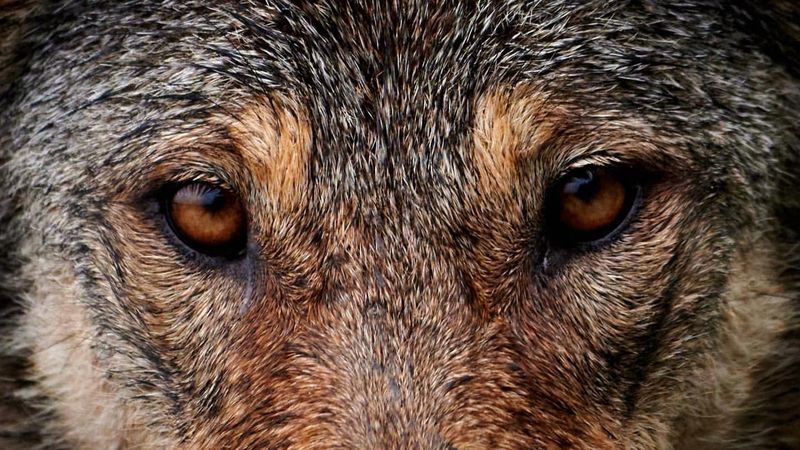
Wolves and huskies possess eyes that are windows to their soul, yet they tell different stories. Wolves typically have yellow or amber eyes, which may appear intimidating with their fierce gaze.
Their eye shape is more almond-like, lending an intense and penetrating look. This eye structure aids wolves in their survival, allowing them to spot prey from long distances.
Huskies, in contrast, boast a variety of eye colors that range from blue to brown, and sometimes even multi-colored eyes. Their eye shape is more rounded, contributing to their friendly and approachable demeanor.
This diversity in eye color not only adds to their appeal but also makes them unique among domestic dogs.
So, when you’re trying to distinguish between a wolf and a husky, a close examination of their eyes can be quite revealing. The color and shape of their eyes hold the key to understanding their nature and environment. A wolf’s eyes reveal the wild, while a husky’s eyes reflect the charm of companionship.
3. Fur: Texture and Color
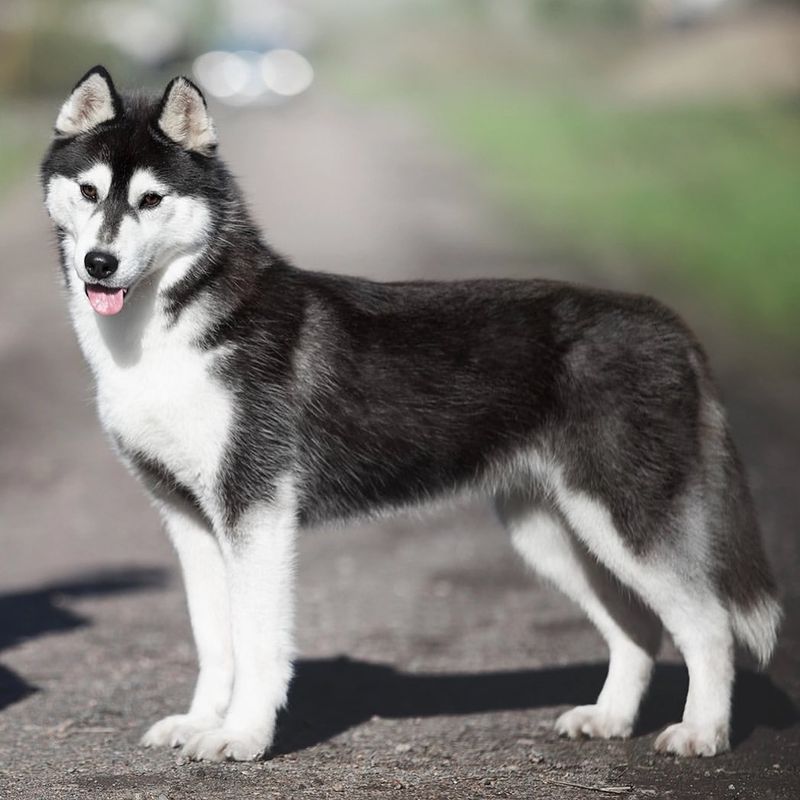
The texture and color of fur serve as another distinguishing feature between wolves and huskies. Wolves have a dense, coarse undercoat that provides insulation against harsh winters, and their fur color tends to blend with their natural surroundings.
Shades of gray, brown, and black help wolves camouflage in the wild, offering them protection and stealth.
Huskies, on the other hand, sport a softer, fluffier coat that is equally equipped for cold weather but often features more vibrant color patterns.
Their coat may include striking combinations of black, white, copper, or even red, which are rarely seen in wolves. This variety not only makes huskies visually appealing but also highlights their domestic heritage.
For the observer, the contrast in fur texture and color can be a helpful indicator when distinguishing between a husky and a wolf.
While a wolf’s fur speaks of survival in the wild, a husky’s coat tells a tale of companionship and warmth. Pay attention to these subtle nuances, and you’ll find it easier to tell them apart.
4. Tail: Shape and Movement

The tail, often a key feature in understanding an animal’s mood and behavior, serves as another point of distinction between wolves and huskies.
Wolves have a bushy tail that hangs straight down, almost like a natural extension of their spine. This feature is designed to help them balance and communicate within their pack.
Huskies, however, usually have a more curled tail that rests over their back. This feature is not only aesthetically pleasing but also functional, as it helps keep them warm by covering their face while they rest in cold climates.
The movement of a husky’s tail is often more expressive and reflects their playful nature. Observing these tail differences can provide insights into whether you’re looking at a wolf or a husky.
While a wolf’s tail is more utilitarian and subtle, a husky’s tail is an expressive and charming part of their personality. This simple observation can be a fun way to learn more about each animal’s nature.
5. Dietary Habits
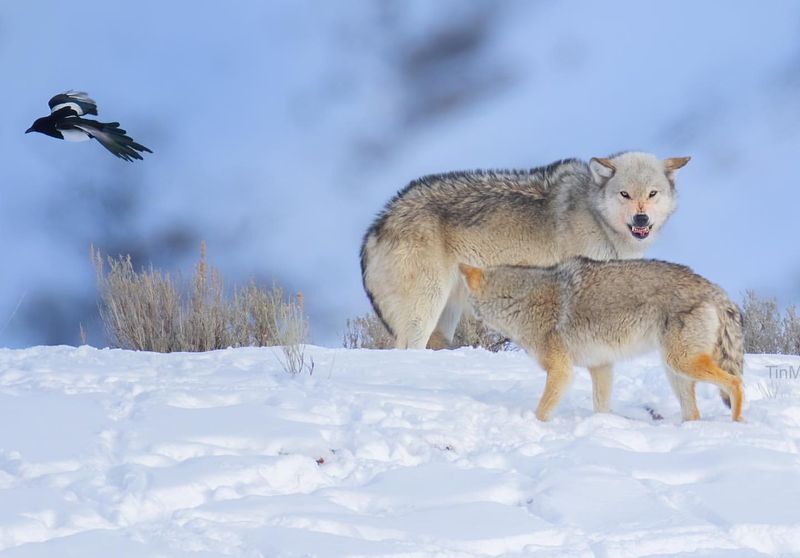
Wolves and huskies also differ significantly in their dietary habits, reflecting their lifestyle and environment. Wolves are carnivorous predators with a diet that primarily consists of large mammals such as deer, elk, and even smaller mammals when necessary.
Their hunting skills are honed to work in packs, employing strategic methods to capture prey.
Huskies, being domesticated dogs, have a diet that is more varied and largely dependent on commercial dog food.
While they still require a balanced diet rich in proteins, fats, and carbohydrates, their food is typically prepared and provided by their owners. This difference in diet reflects their adaptation to living alongside humans.
Understanding these dietary differences can be enlightening when distinguishing between a wolf and a husky. While a wolf’s eating habits are wild and instinctual, a husky’s diet is managed and scheduled. This contrast highlights the variance in their lifestyles and survival strategies.
6. Social Behavior
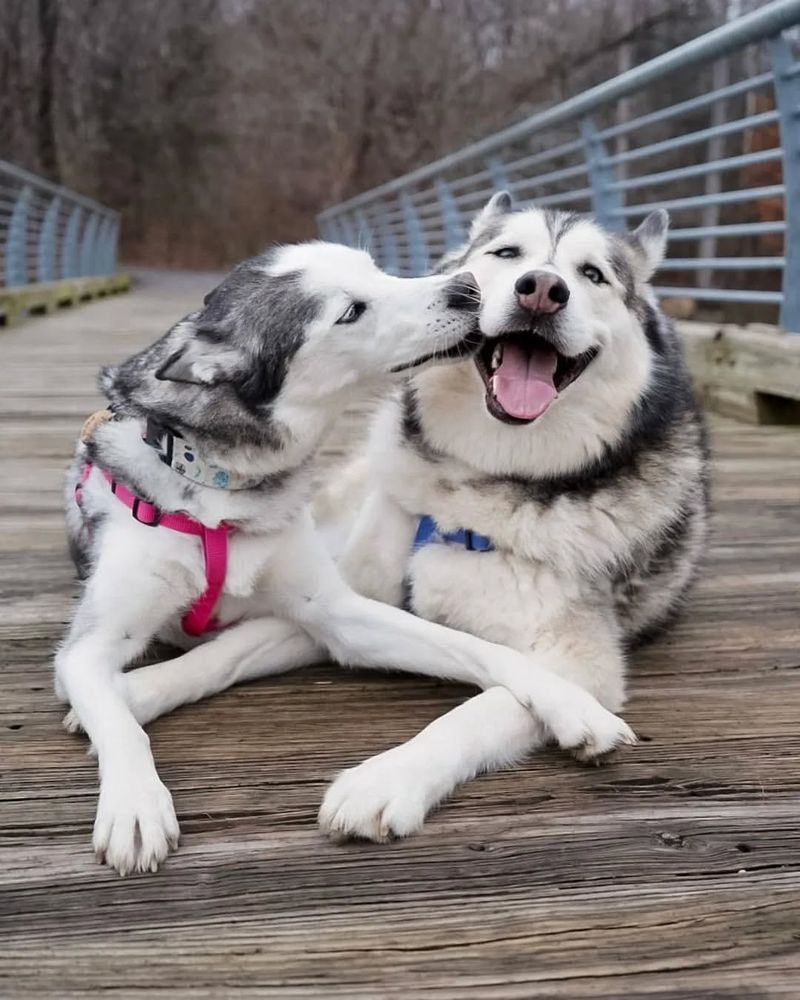
Social behavior sets wolves and huskies apart in fascinating ways. Wolves are pack animals that thrive in structured social units. Their survival depends on cooperation, communication, and a strict hierarchy within the pack.
Each member has a role, and teamwork is essential for hunting and raising young. Huskies, while also social, are more adaptable to living alongside humans.
They enjoy companionship and are known for their friendly and playful demeanor with both people and other dogs. Their social behavior is less rigid compared to wolves, reflecting their domesticated nature.
By observing their social interactions, one can easily distinguish between a wolf and a husky. Wolves are more reserved and tend to avoid human contact, whereas huskies seek companionship and are often eager to engage with people.
This difference in social behavior offers a clear insight into their respective lifestyles and relationships.
7. Vocalizations
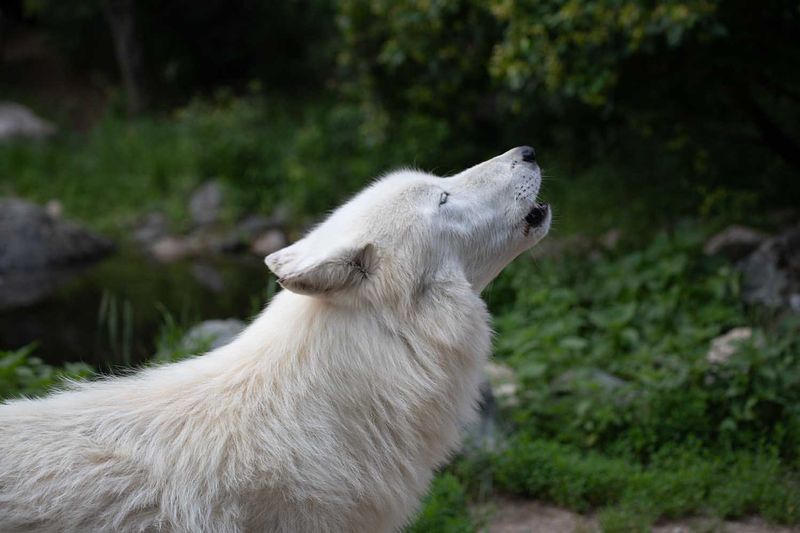
The vocalizations of wolves and huskies provide another intriguing way to differentiate between the two. Wolves are known for their iconic howls, which serve multiple purposes such as communicating with pack members, marking territory, and coordinating during hunts.
The haunting sound of a wolf’s howl can travel long distances, echoing through the wilderness. Huskies, while capable of howling, are more likely to bark, whine, or even ‘talk’ with their unique vocalizations.
Their sounds are often expressive and can include a variety of pitches and tones, reflecting their social and interactive nature. These vocalizations are usually directed towards humans or other pets, showcasing their friendly demeanor.
Listening to the vocalizations of these animals can help identify them. While a wolf’s howl is a call from the wild, a husky’s vocal repertoire is a charming conversation with its human companions. These audible differences are pivotal in recognizing their distinct identities.
8. Physical Build
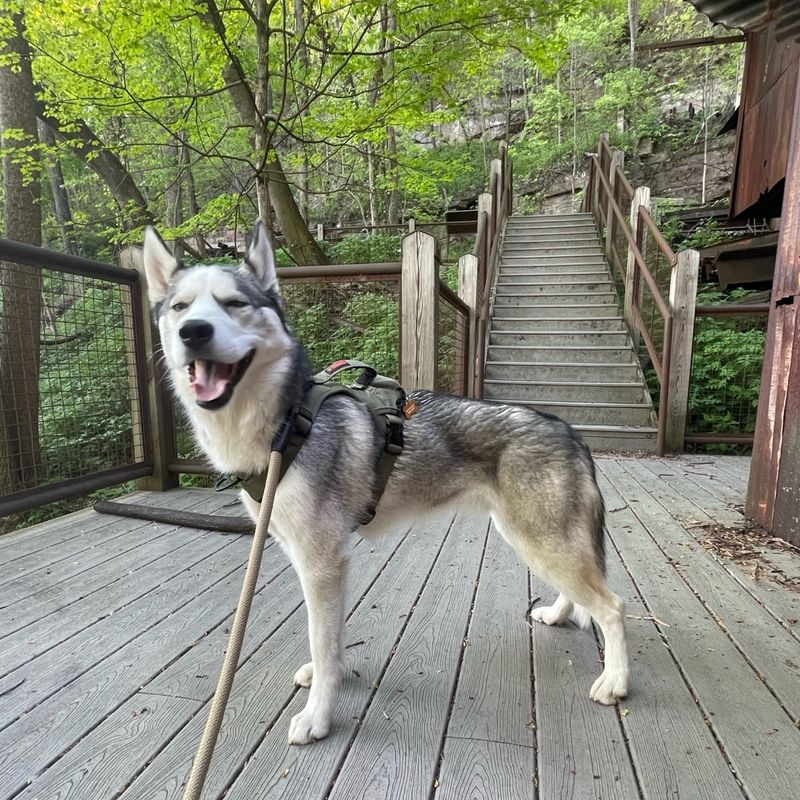
The physical build of wolves and huskies offers another way to tell them apart. Wolves are generally larger, with a lean and muscular build that is adapted for hunting and long-distance travel. Their long legs and narrow chest allow them to cover vast territories in search of food.
Huskies, though strong and agile, are more compact in size. Their build is designed for endurance and working in harsh climates, such as pulling sleds across snowy terrains. While they are muscular, their appearance is less intimidating than that of a wolf.
By observing the size and muscle structure, one can distinguish whether an animal is a wolf or a husky. While a wolf’s build speaks of strength and wilderness survival, a husky’s build reflects endurance and companionship.
These physical attributes are key indicators of their respective roles in nature and human society.
9. Paws and Tracks
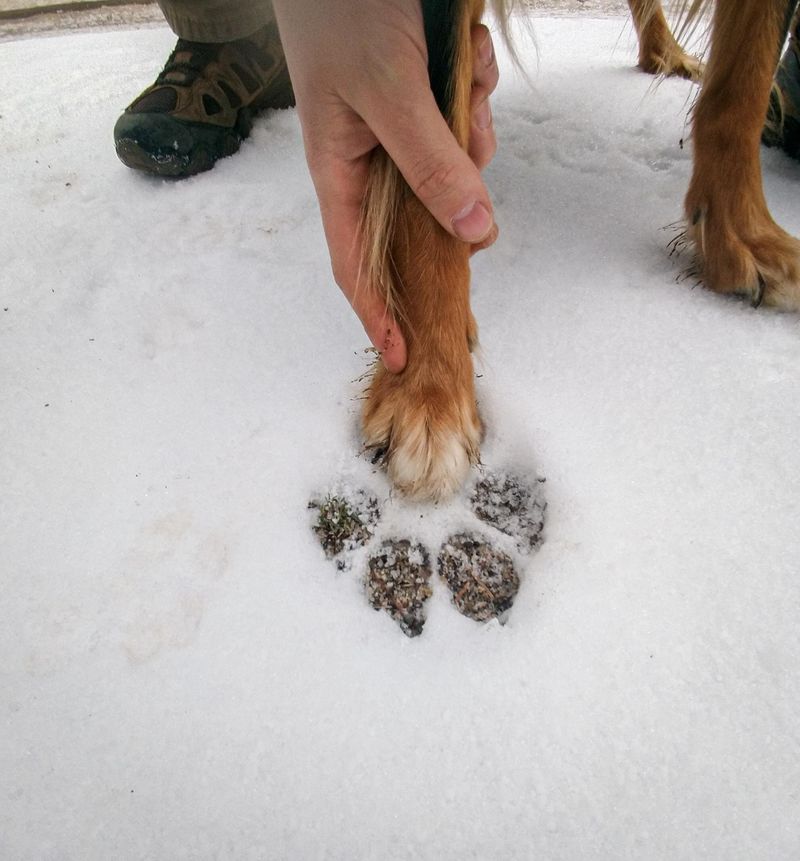
The paws and tracks of wolves and huskies are uniquely different, providing another way to distinguish between them. Wolves have larger paws with long, curved claws that help them grip icy surfaces and uneven terrains.
Their tracks are often straighter and more spaced out, reflecting their efficient movement over long distances.
Huskies, with slightly smaller and more rounded paws, leave tracks that are closer together, indicative of their playful and energetic nature. Their claws are less pronounced, as they are not typically needed for hunting or trekking through the wild.
By examining the size and shape of tracks, one can determine if they’re looking at a wolf or a husky. While a wolf’s tracks are a testament to their wild lifestyle, a husky’s tracks tell a story of domestication and companionship.
These subtle differences in paws and tracks provide a fascinating glimpse into their distinct ways of life.
10. Facial Expression
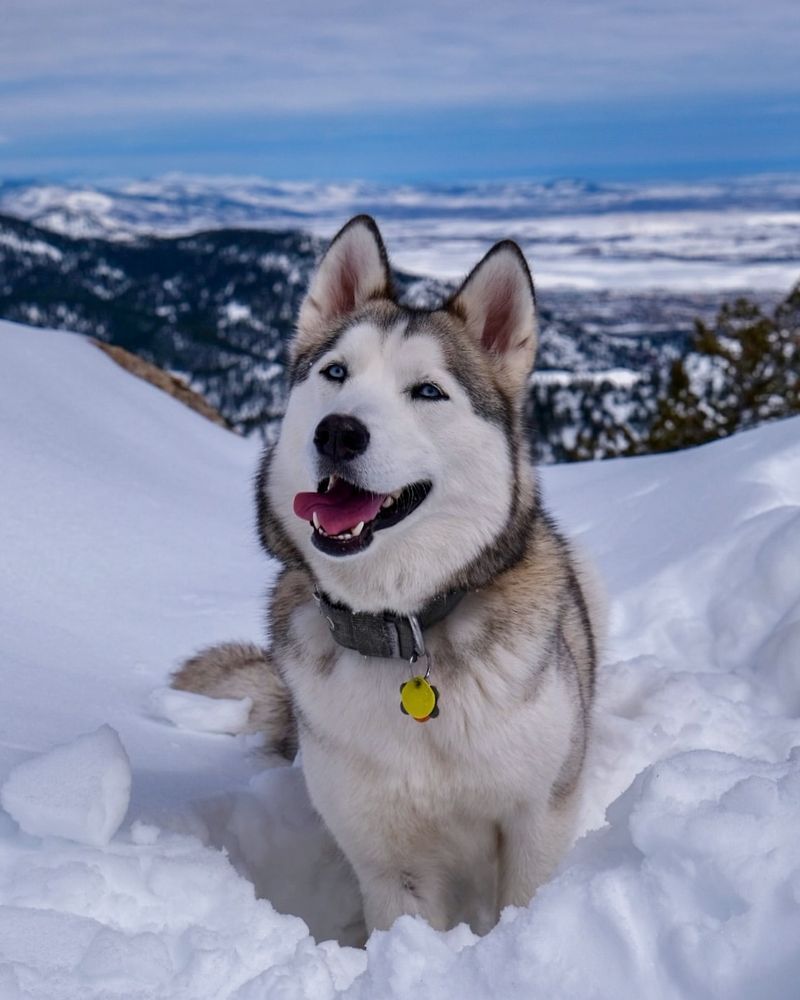
Facial expressions can reveal much about an animal’s temperament and mood, and wolves and huskies differ notably in this aspect.
Wolves often have a more intense and focused expression, characterized by their penetrating gaze and alert posture. This expression is a result of their need to constantly be aware of their surroundings in the wild.
Huskies, by contrast, tend to have a more relaxed and friendly expression. Their playful eyes and expressive faces often seem to smile, inviting interaction and companionship. This approachable look makes them popular as pets and companions.
Observing facial expressions can provide insights into whether you’re looking at a wolf or a husky.
The intensity in a wolf’s expression speaks of survival and awareness, while a husky’s friendly face reflects warmth and sociability. These visual cues are a delightful way to understand their personalities.
11. Lifespan and Longevity
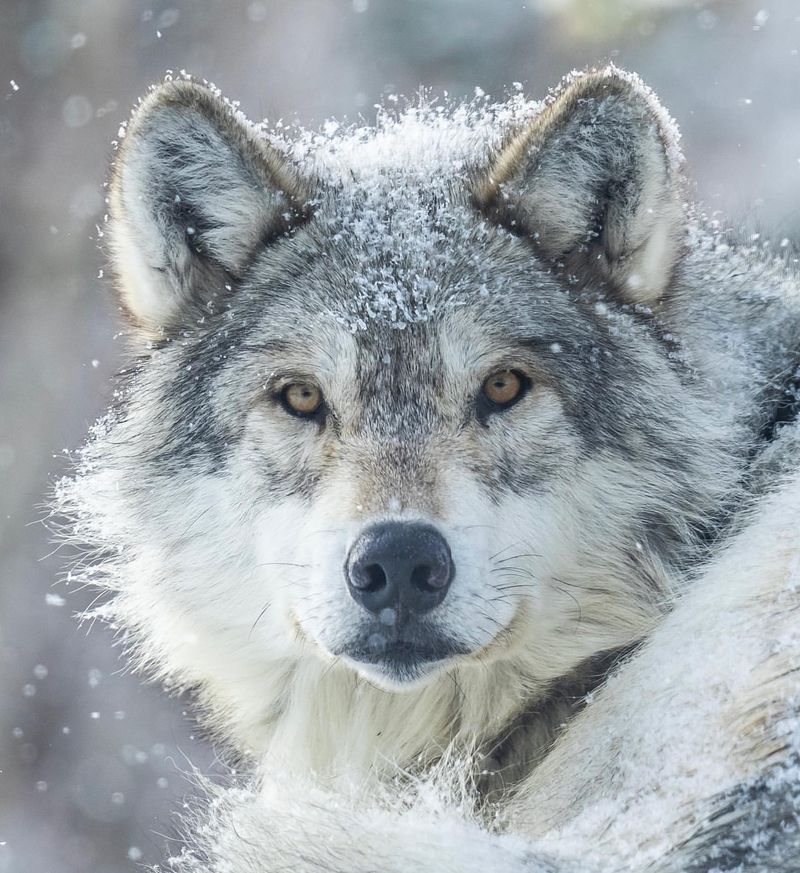
The lifespan and longevity of wolves and huskies present another intriguing contrast. In the wild, wolves typically live up to 6-8 years, facing various challenges such as competition for food, territory, and threats from other predators.
Their life is a struggle for survival, with only the strongest and most adaptable thriving. Huskies, benefiting from domestication, tend to have longer lifespans, often ranging from 12-15 years.
With regular veterinary care, a stable food supply, and a safe environment, they enjoy a more secure and prolonged life. This increased longevity reflects the care and protection provided by human companionship.
Understanding these differences in lifespan provides a deeper appreciation for the distinct lives of wolves and huskies.
While a wolf’s life in the wild is short and full of challenges, a husky’s life is enriched by human care, allowing them to enjoy a longer, healthier existence. This contrast highlights the impact of environment and care on their longevity.
12. Adaptability to Environment

The adaptability of wolves and huskies to different environments is a testament to their evolutionary paths.
Wolves are highly adaptable creatures that can thrive in various habitats, from forests and mountains to deserts and tundras. Their survival skills and instincts allow them to adjust to changing conditions and find resources in the wild.
Huskies, while also adaptable, are primarily suited for cold climates, where they excel in activities such as sledding and working alongside humans. Their thick coat and endurance make them perfect companions for snowy environments, but they can also adapt to urban settings with proper care and exercise.
By observing how each animal interacts with its environment, one can discern whether it’s a wolf or a husky.
While a wolf’s adaptability speaks of independence and survival, a husky’s adaptability reflects companionship and cooperation. These differences highlight their unique roles and relationships with their surroundings.
13. Role in Human Culture
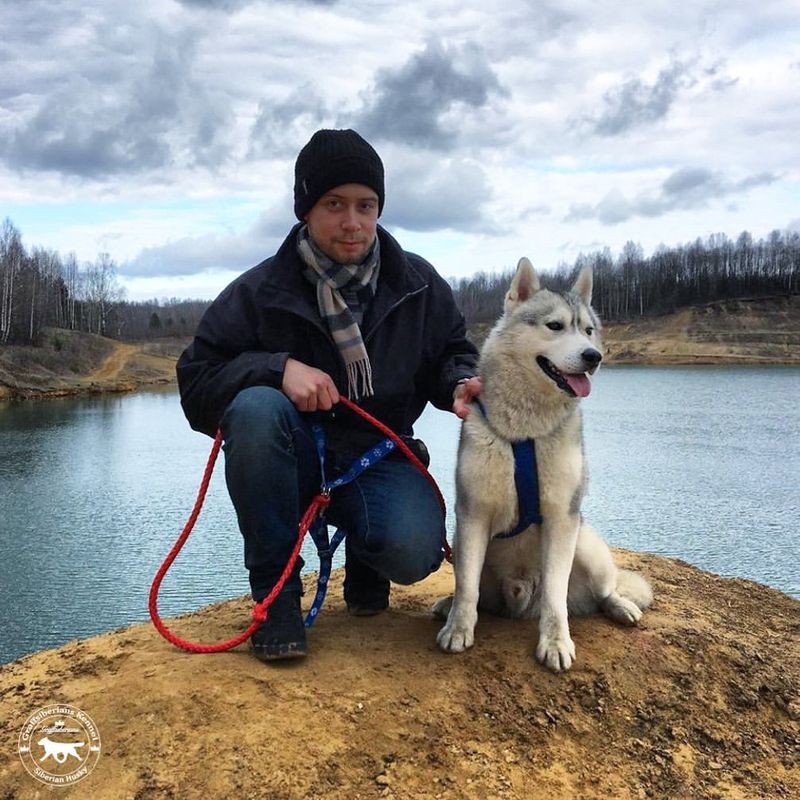
The role of wolves and huskies in human culture presents a fascinating contrast. Wolves have long been featured in folklore and mythology, often depicted as symbols of wilderness, mystery, and even danger.
Their elusive nature and haunting howls have inspired countless stories and legends, capturing human imagination.
Huskies, by contrast, have played a more direct role in human culture, particularly in regions where they have been used as working dogs.
They are celebrated for their strength, loyalty, and ability to work alongside humans in harsh conditions. Their friendly nature and striking appearance have made them beloved pets and companions.
Exploring their cultural roles provides insights into how humans have perceived and interacted with these animals over time.
While wolves inspire awe and intrigue, huskies bring warmth and companionship into our lives. These roles highlight the diverse ways in which wolves and huskies have become part of human history and culture.

